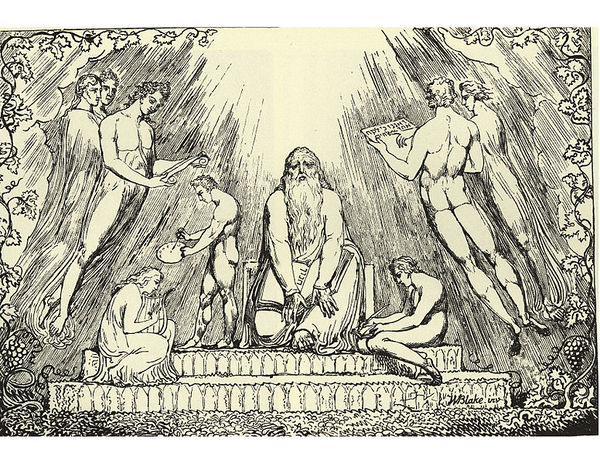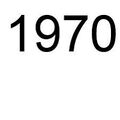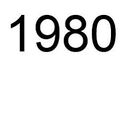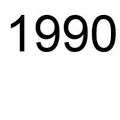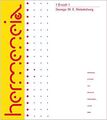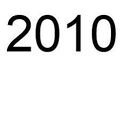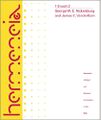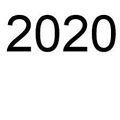Difference between revisions of "Category:Enochic Studies"
| Line 24: | Line 24: | ||
|px= 38 | |px= 38 | ||
|content= | |content= | ||
After the 4th century the Book of Enoch was considered to be "lost" in the West. But his memory remained vivid in the Church and some important portions of the ancient Greek version resurfaced in the World Chronicle written by [[George Syncellus]] in the 8th-9th century. These Greek fragments were first published by [[Joseph | After the 4th century the Book of Enoch was considered to be "lost" in the West. But his memory remained vivid in the Church and some important portions of the ancient Greek version resurfaced in the World Chronicle written by [[George Syncellus]] in the 8th-9th century. These Greek fragments were first published by [[Joseph Justus Scaliger]] in 1606 and discussed by [[Johannes Drusius]] in 1612. [[Jacques Goar]] translated them into Latin in 1652, when he published the ''editio princeps'' of Syncellus' Chronography. | ||
In the 18th and early19th century the interest of scholars remained focused on these fragments. Sarnelli authored the first commentary on the Watchers (1710). Fabricius | In the 18th and early19th century the interest of scholars remained focused on these fragments, which provided the only textual evidence for 1 Enoch. [[Pompeo Sarnelli]] authored the first commentary on the Watchers (1710). [[Johann Albert Fabricius]] included them in his collection of the OT Pseudepigrapha (1713-. [[Nicolas Antoine Boulanger]] and [[Paul-Henri Thiry d'Holbach]] used them in their dissertation on Enoch (1762). Silvestre de Salcy translated them into French (1800) and German (1801), and [[Daniele Manin]] into Italian (1820). | ||
In the meantime, however, the explorer [[James Bruce]] had finally reached Ethiopia and brought back in 1770 a copy of the Ethiopic version, of which | In the meantime, however, the explorer [[James Bruce]] had finally reached Ethiopia and brought back in 1770 a copy of the Ethiopic version, of which [[Richard Laurence]] published in 1821 the first English translation, followed by the ''editio princeps'' of the Ethiopic text in 1838. | ||
}} | }} | ||
Revision as of 17:32, 8 December 2013
|
Overview Enochic Studies / Research in the Enochic Literature is a field of research in Second Temple Judaism, that specializes in the study of Enoch and the literature attributed to him (1 Enoch, 2 Enoch, and 3 Enoch).
History of research After the 4th century the Book of Enoch was considered to be "lost" in the West. But his memory remained vivid in the Church and some important portions of the ancient Greek version resurfaced in the World Chronicle written by George Syncellus in the 8th-9th century. These Greek fragments were first published by Joseph Justus Scaliger in 1606 and discussed by Johannes Drusius in 1612. Jacques Goar translated them into Latin in 1652, when he published the editio princeps of Syncellus' Chronography. In the 18th and early19th century the interest of scholars remained focused on these fragments, which provided the only textual evidence for 1 Enoch. Pompeo Sarnelli authored the first commentary on the Watchers (1710). Johann Albert Fabricius included them in his collection of the OT Pseudepigrapha (1713-. Nicolas Antoine Boulanger and Paul-Henri Thiry d'Holbach used them in their dissertation on Enoch (1762). Silvestre de Salcy translated them into French (1800) and German (1801), and Daniele Manin into Italian (1820). In the meantime, however, the explorer James Bruce had finally reached Ethiopia and brought back in 1770 a copy of the Ethiopic version, of which Richard Laurence published in 1821 the first English translation, followed by the editio princeps of the Ethiopic text in 1838.
Chronology
Languages
Countries
|
Categories
Texts
|
Pages in category "Enochic Studies"
The following 172 pages are in this category, out of 172 total.
- Enochic Studies (1450s)
- Enochic Studies (1500s)
- Enochic Studies (1600s)
- Enochic Studies (1700s)
- Enochic Studies (1800s)
- Enochic Studies (1850s)
- Enochic Studies (1900s)
- Enochic Studies (1910s)
- Enochic Studies (1920s)
- Enochic Studies (1930s)
- Enochic Studies (1940s)
- Enochic Studies (1950s)
- Enochic Studies (1960s)
- Enochic Studies (1970s)
- Enochic Studies (1980s)
- Enochic Studies (1990s)
- Enochic Studies (2000s)
- Enochic Studies (2010s)
- Enochic Studies (2020s)
*
~
- George Syncellus (d. after 811), scholar
- Robert Grosseteste (M / Britain, 1175c-1253), scholar
- Menahem Recanati (M / Italy, 1250-1310), scholar
- Guglielmo Raimondo Moncada (M / Italy, 15th cent.), scholar, translator
- Johannes Reuchlin (M / Germany, 1455-1522), scholar
- Francesco Zorzi (M / Italy, 1460-1540), scholar
- Giovanni Pico della Mirandola (M / Italy, 1463-1494), scholar
- Ludovico Ariosto (M / Italy, 1474-1533), poet
- Giovanni Agostino Panteo (M / Italy, d.1535), alchemist
- Jan Matthys (M / Netherlands, 1500-1534), visionary
- Anthony Gilby (M / Britain, 1510-1585), scholar, translator
- Jacques Lefèvre d'Étaples (M / France, 1455-1536), scholar
- Guillaume Postel (M / France, 1510-1581), scholar
- Guglielmo Sirleto (M / Italy, 1514-1585), scholar
- John Dee (M / Britain, 1527-1608), occultist
- Mordecai Jaffe (M / Czechia, 1530-1612), scholar
- Joseph Justus Scaliger (M / Netherlands, 1540-1609), scholar
- Johannes Drusius (M / Netherlands, 1550-1616), scholar
- Edward Kelley (M / Britain, 1555-1597), occultist
- Isaac Casaubon (M / France, 1559-1614), scholar
- Nicolao Godinho (M / Portugal, 1559-1616), Portuguese scholar
- Luis de Urreta (1570-1636), Spanish scholar
- Samuel Purchas (1577-1626), scholar
- Jacques Bolduc
- Nicolas-Claude Fabri de Peiresc (M / France, 1580-1637), scholar
- Gilles de Loches
- Pierre Gassendi
- Scipione Sgambati (M / Italy, 1595-1652), scholar
- Agathange de Vendôme
- Méric Casaubon (1599-1671), scholar
- Peter Heylyn (1599-1662), scholar
- Thomas Bangius (M / Denmark, 1600-1661), scholar
- Jacques Goar (M / France, 1601-1653), scholar
- Athanasius Kircher (M / Germany, 1601/02-1680), scholar
- Christianus Schotanus (1603-1671), Dutch scholar
- Thomas Browne (1605-1682), scholar
- John Milton (M / Britain, 1608-1674), poet, playwright
- Johannes Heinrich Ursinus
- Johann Heinrich Hottinger (1620-1667), scholar
- Jane Lead (F / Britain, 1623-1704), visionary
- Hiob Ludolf (M / Germany, 1624-1704), scholar
- Johann Heinrich Heidegger (1633-1698), Swiss scholar
- August Pfeiffer (M / Germany, 1640-1698), German scholar
- Gottfried Vockerodt (1665-1727), German scholar
- ~ Joannes Ernestus Grabe (1666-1711), German-British scholar
- William Whiston (1667-1752), scholar
- Johann Albert Fabricius (M / Germany, 1668-1735), scholar
- Johann Christian Nehring (M / Germany, 1671-1736), scholar
- Pierre Jurieu (M / France, 1637-1713), scholar
- Pseudo-vetus testamentum (1707 Mölling / Schmidt), dissertation
- Agostino Antonio Giorgi (M / Italy, 1711-1797), scholar
- Nicolas Antoine Boulanger (1722-1759), scholar
- James Bruce (1730-1794), traveler
- Richard Laurence (M / Britain, 1760-1838), scholar
- Moses Stuart (M / United States, 1780-1852), scholar
- Andreas Gottlieb Hoffmann (1796-1864), German scholar
- Edward Murray (1798-1852), British scholar
- Jacques-Paul Migne (1800-1875), scholar
- Wilhelm Dindorf (1802-1883), German scholar
- Heinrich Ewald (1803-1875), scholar
- Samuel Davidson (1807-1898), scholar
- Alphonse Louis Constant (M / France, 1810-1875), occultist
- August Dillmann (1823-1894), German scholar
- ~ Theodor Zahn (1838-1933), German scholar
- Charles Taylor (1840-1908), scholar
- Oscar von Gebhardt (1844-1906), scholar
- Eberhard Nestle (1851-1913), scholar
- Johannes Flemming (1854-1914), German scholar
- S.L. MacGregor Mathers (1854-1918), occultist
- George H. Schodde (1854-1917), scholar
- Aleksandr V. Smirnov (M / Russia, 1854-1919), scholar
- Robert Henry Charles (1855-1931), scholar
- Matvei I. Sokolov (M / Russia, 1855-1906), scholar
- Montague Rhodes James (1862-1936), scholar
- Nathaniel Schmidt (M / Sweden, United States, 1862-1939), scholar
- ~ Charles Cutler Torrey (1863-1956), American scholar
- ~ F. Crawford Burkitt (1864-1935), British scholar
- Adolf Deissmann (1866-1937), scholar
- William O.E. Oesterley (1866-1950), scholar
- Heinrich Appel
- Adolphe Lods (M / France, 1867-1948), scholar
- François Martin (M / France, 1867-1928), scholar
- Ludwig Radermacher (1867-1852), scholar
- Lazarus Goldschmidt (1871-1950), scholar
- Edgar J. Goodspeed (1871-1962), scholar
- Kirsopp Lake (1872-1946), scholar
- Aleister Crowley (1875-1947), occultist
- Erik Peterson
- Alfredo Vitti
- André Vaillant (1890-1977), scholar
- Béla Hamvas (1897-1968), scholar
- Hugo Odeberg (1898-1973), scholar
- Otto E. Neugebauer (1899-1990), scholar
- Günther Zuntz (1902-1992), scholar
- Erik Konstans Teodor Sjöberg (1907-1963), scholar
- Matthew Black (1908-1994), British scholar
- Sergio Donadoni (M / Italy, 1914-2015), scholar
- Pierre Grelot (1917-2009), scholar
- Mathias Delcor (1919-1992), Spanish-French scholar
- Mario Pincherle (M / Italy, 1919-2012), arch-fi author
- Joseph A. Fitzmyer (1920-2016), American scholar
- ~ André Caquot (1923-2004), French scholar
- James Barr (1924-2006), British scholar
- Jonas C. Greenfield (1926-1995), scholar
- Marc Philonenko (1930-), scholar
- Paolo Sacchi (M / Italy, 1930), scholar
- Rochus Zuurmond (M / Netherlands, 1930-2020), scholar
- George W.E. Nickelsburg (1934-), scholar
- Ephraim Isaac (b.1936), scholar
- Michael A. Knibb (M / Britain, 1938), scholar
- Michael E. Stone (1938-), scholar
- Devorah Dimant (b.1939), scholar
- ~ Paul D. Hanson (1939-), American scholar
- James H. Charlesworth (1940-), scholar
- Maurice Casey (1942-2014), British scholar
- Gerald Schueler (1942-2013), occultist
- Margaret Barker (F / Britain, 1944), scholar
- William R.G. Loader (b.1944), scholar
- Daniel Boyarin (M / United States, 1946), scholar
- John J. Collins (1946-), scholar
- Mogens Müller (M / Denmark, 1946), scholar
- James C. VanderKam (M / United States, 1946), scholar
- István Baán (b.1948), scholar
- Helge S. Kvanvig (M / Norway, 1948), scholar
- Ida Fröhlich (F / Hungary, 1949), scholar
- ~ David R. Jackson (b.1951), Australian scholar
- Gabriele Boccaccini (b.1958), Italian-American scholar
- Andrei A. Orlov (M / Russia, United States, 1960), scholar
- Loren T. Stuckenbruck (b.1960), scholar
- Igor R. Tantlevskij (M / Russia, 1961), Russian scholar
- Giovanni Ibba (M / Italy, 1962), scholar
- Henryk Drawnel (b.1963), Polish scholar
- Michael Segal (1972-), scholar
- Annette Yoshiko Reed (F / United States, 1973), scholar
- Michaël Langlois (1976-), scholar
- Pierpaolo Bertalotto (1978-), scholar
- ~ Randal A. Argall, American scholar
- ~ Leslie Baynes, American scholar
- ~ Roger T. Beckwith, British scholar
- Andreas Bedenbender, scholar
- Robert A. Coughenour
- Charles A. Gieschen, scholar
- Grant Macaskill, scholar
- Leslie W. Walck, scholar
- James A. Waddell
Media in category "Enochic Studies"
The following 61 files are in this category, out of 61 total.
- 1713 Fabricius.jpg 326 × 500; 30 KB
- 1820 * Manin.jpg 138 × 200; 7 KB
- 1970.jpg 225 × 225; 4 KB
- 1976 * Milik.jpg 471 × 640; 17 KB
- 1978 Knibb.jpg 352 × 500; 18 KB
- 1978 Laycock.jpg 333 × 500; 37 KB
- 1979 * Suter.jpg 260 × 402; 7 KB
- 1979 Hartman.jpg 360 × 585; 28 KB
- 1979 Zamorani.jpg 424 × 592; 20 KB
- 1980.jpg 225 × 225; 4 KB
- 1980 * Stone.jpg 319 × 499; 27 KB
- 1984 * VanderKam.jpg 333 × 500; 18 KB
- 1988 Kvanvig.jpg 128 × 195; 2 KB
- 1989 Adler.jpg 683 × 920; 113 KB
- 1990.jpg 225 × 225; 4 KB
- 1990 * Sacchi.jpg 357 × 499; 22 KB
- 1993 * Tiller.jpg 317 × 474; 18 KB
- 1995 * VanderKam.jpg 328 × 499; 21 KB
- 1995 VanderKam Adler.jpg 333 × 500; 14 KB
- 1997 * Chiala.jpg 320 × 500; 28 KB
- 1997 Stuckenbruck.png 361 × 536; 40 KB
- 1998 * Boccaccini.jpg 336 × 499; 49 KB
- 2000.jpg 226 × 226; 6 KB
- 2000 Bedenbender.jpg 320 × 499; 20 KB
- 2001 * Nickelsburg.jpg 357 × 400; 14 KB
- 2002 * Boccaccini.jpg 337 × 499; 28 KB
- 2002-E * Boccaccini.jpg 1,313 × 1,841; 975 KB
- 2003 * Bautch.jpg 427 × 648; 30 KB
- 2004 Auffarth (ed).jpg 400 × 611; 234 KB
- 2004 Jackson.jpg 307 × 499; 11 KB
- 2004 Nickelsburg VanderKam.jpg 335 × 499; 26 KB
- 2004 Olson.jpg 384 × 500; 36 KB
- 2005 * Reed.jpg 375 × 500; 40 KB
- 2005-E * Boccaccini.jpg 333 × 499; 39 KB
- 2007-E * Boccaccini Collins.jpg 333 × 499; 13 KB
- 2007-E * Boccaccini.jpg 333 × 499; 40 KB
- 2009 Boccaccini (ed).jpg 333 × 499; 31 KB
- 2009 Knibb.jpg 1,904 × 2,891; 758 KB
- 2010.jpg 225 × 225; 4 KB
- 2011 * Waddell.jpg 333 × 499; 12 KB
- 2011 Walck.jpg 314 × 499; 16 KB
- 2012 * Boyarin.jpg 344 × 499; 53 KB
- 2012 * Nickelsburg VanderKam.jpg 421 × 500; 21 KB
- 2012 Arcari.jpg 333 × 499; 16 KB
- 2014-E Bock Charlesworth.jpg 314 × 499; 15 KB
- 2016-E * Stuckenbruck Boccaccini.jpg 333 × 499; 60 KB
- 2018 * Reeves Reed.jpg 331 × 499; 36 KB
- 2019 Drawnel.jpg 298 × 400; 8 KB
- 2019-E * Kulik Boccaccini.jpg 332 × 499; 17 KB
- 2020.jpg 225 × 225; 4 KB
- 2020 Arcari.jpg 329 × 499; 25 KB
- 2020 Asale.jpg 333 × 500; 40 KB
- 2020-E Gebreananaye.jpg 333 × 499; 17 KB
- 2021 Bokhorst.jpg 400 × 590; 158 KB
- 2021 Churton.jpg 400 × 599; 202 KB
- 2021 Scott.jpg 314 × 500; 34 KB
- 2022 Lafitaga.jpg 334 × 500; 19 KB
- 2022 Stewart.jpg 668 × 1,000; 28 KB
- 2023 Dugan.jpg 500 × 750; 58 KB
- 2023 VanderKam.jpg 400 × 604; 149 KB
- 2023-E * Hessayon Reed Boccaccini.jpg 1,869 × 2,846; 769 KB
